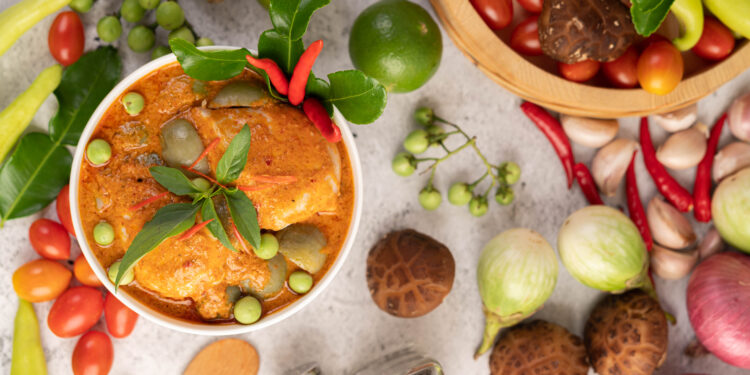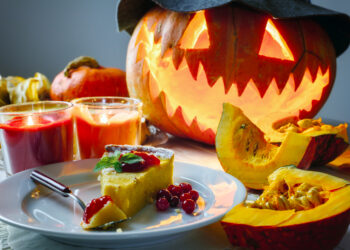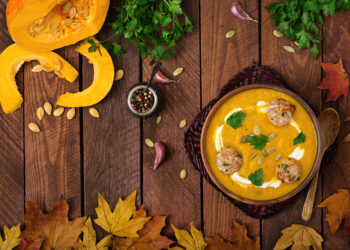Heart of Caribbean Food Culture, that’s what Curry has become over the past two centuries. From the sizzle of goat curry bubbling away in a Trinidadian pot to the fragrant whisper of duck curry wafting through a Guyanese Sunday gathering, this beloved dish is more than just a meal. It’s identity, memory, resistance, and it tells the story of an unexpected but powerful migration: from the Indian subcontinent to the vibrant Caribbean.
Let’s dig into the delicious legacy of how Indian curry travelled across oceans, survived indentured, embraced tropical ingredients, and ultimately became a defining dish of Caribbean cuisine.
Curry Across Continents: A Colonial Inheritance
The story begins in the 19th century, after the abolition of slavery in the British Empire. Faced with labour shortages on sugar plantations, British colonialists turned to India and signed hundreds of thousands of indentured contracts. Between 1838 and 1917, over half a million Indians were shipped to colonies such as Trinidad, Guyana, Jamaica, and Suriname.
They brought with them not only language and religion, but also cumin, coriander, garam masala, and most importantly, the instinct to cook, adapt, and preserve their culinary traditions.
Cooking under hardship meant making do with what was available. Traditional Indian ingredients like mustard seeds or ghee weren’t always accessible, so, Caribbean cooks innovated. Local herbs like chadon beni (culantro) stood in for coriander, scotch bonnet chillies spiced things up, and coconut milk lent creaminess to gravies. This was where the great culinary fusion began.
Goat, Duck, Shrimp: Caribbean Curry with a Twist
While Indian curry typically focuses on chicken, lamb, or vegetarian fare, Caribbean curry brings its own heroes to the table. Let’s break down a few iconic dishes:
1. Curry Goat: The undisputed monarch of Caribbean curry. Goat curry is especially popular in Jamaica, Trinidad and Guyana. It’s often marinated overnight in green seasoning (a punchy blend of thyme, garlic, onions, and chadon beni), then slow-cooked with curry powder until the meat falls off the bone. Scotch bonnet adds heat, while all spice and pimento round out the flavours.
2. Curry Duck: A firm favourite among Indo-Caribbeans, especially in Trinidad. Duck’s richness stands up well to the robust spices. The meat is usually seared to a caramelised brown before simmering away in curry paste, fresh herbs, and hot peppers. Traditionally paired with dal and rice or roti for soaking up every drop.
3. Curry Shrimp: Brighter, quicker and beach-approved. Curry shrimp is often made in a lighter gravy with coconut milk, tomatoes, and lime juice. The result? A zesty, creamy dish that’s Caribbean comfort in a bowl.
These aren’t just meals, they’re centrepieces at weddings, family lime-ups, Diwali feasts, and Sunday limes.
Indian Curry vs. Caribbean Curry: What’s the Difference?
So, how does Caribbean curry differ from its Indian cousin? Let’s put them side by side:
- The Spice Blend
Indian curry is often made with fresh ground spices, layered in stages, think cumin seeds bloomed in oil, turmeric, garam masala added last. Caribbean curry, on the other hand, usually starts with a pre-mixed curry powder (Chief, Turban, or Matouk’s are pantry staples) that’s “burned” in hot oil to release its flavour before meat or veg is added. - Herbs & Aromatics
Caribbean curries lean heavily on chadon beni, thyme, and spring onions — versus coriander, ginger, and green chilli in Indian recipes. And of course, the scotch bonnet pepper adds a unique fire unlike anything in Indian cuisine. - Cooking Fats
Indian food often uses ghee or mustard oil; Caribbean dishes typically go for vegetable oil or coconut oil, depending on the region. - Heat & Tempo
Caribbean curries tend to be bolder and hotter, often due to the scotch bonnet and all-purpose green seasoning. Indian curries span a wider heat spectrum, depending on region and religious tradition. - Sidekicks
You’ll find Indian curries paired with basmati rice, naan, or chapati, but Caribbean curry comes home to rice and peas, dal puri, or plain rice, depending on the island and the family.
Fusion and Identity on a Plate
Curry’s transformation in the Caribbean isn’t just about ingredients; it’s about identity. Food became a way for indentured Indians to maintain cultural ties and create new ones. Over time, curry crossed racial and cultural lines. Afro-Caribbean communities began cooking it too, adapting it with their own flair, and today, Caribbean curry belongs to everyone.
At a Trinidadian food stall, it’s not unusual to see a curry goat roti being devoured by someone whose ancestors came from Africa, China, Portugal, or the UK. The dish has become universal, democratic, and proudly local.
Where to Get Proper Caribbean Curry in the UK
You don’t have to cross the Atlantic to get your hands on a proper Caribbean curry. The UK’s Caribbean diaspora has been serving up the goods for decades, with curries front and centre on their menus.
Here are a few UK favourites:
-
Cottons (Camden, Shoreditch, Vauxhall, Notting Hill – London)– A longstanding name in London’s Caribbean dining scene. Cottons dishes up refined yet flavour-packed plates — including their rich curry goat and spicy Trini-style shrimp curry. Expect big flavours in stylish surroundings.
-
Ma Petite Jamaica (Camden, London)– Ma Petite Jamaica brings a carnival of colour, reggae beats, and bold Caribbean cooking. Their curry goat is slow-cooked to perfection, served with rice and peas or fluffy roti. Add a rum punch and you’ve got yourself a mini Jamaican holiday without leaving London.
And if you’re lucky enough to be near a Caribbean festival (Notting Hill Carnival, Leeds West Indian Carnival, or Birmingham Caribbean Festival), you’ll catch the scent of curry floating through the streets, luring hungry revellers to pop-up stalls with bubbling pots and fresh rotis.
Curry’s Modern Evolution in the Caribbean Kitchen
Today’s Caribbean cooks, especially younger chefs and home cooks, are reimagining curry once again. Plant-based takes (hello jackfruit curry), curry tacos, and even curried scotch eggs, are popping up at food festivals and on Instagram. Some stick to tradition; others mix things up with global influences, but the foundation remains strong: spice, soul, and something simmered with love.
And let’s not forget: curry is also a vehicle for family stories. Recipes passed down from grandparents, tweaks made along the way, secrets never written down. You could say every Caribbean curry is a bit of a love letter — to ancestors, survival, and Sunday dinners.
Final Sprinkle of Masala!
Curry may have arrived in the Caribbean through the dark corridors of indenture, but it bloomed into something joyful, complex, and fiercely loved. It absorbed the sun, sea, and struggle of the region and became its own bold, beautiful thing. Caribbean curry isn’t just Indian food with a tan — it’s a rich, evolving legacy that deserves every plate it lands on.
So next time someone asks, “Is curry really Caribbean?” — just hand them a spoonful of duck curry, a piece of buss-up-shut, and let the flavours do the talking.
For more spicy stories and cultural flavour, follow currybien.co.uk/.



















